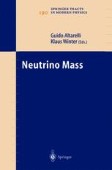Search
Search Results
-
Course 15: Observations of the High Energy $\gamma$ -Ray Universe
This article describes the nature and current status of observational programs studying astrophysical high energy...
-
Course 1: Accretion and Ejection-Related MHD
This lecture is an introduction to MHD. Relevant equations, both in the classical and special-relativistic regimes are derived. The magnetic field...
-
Course 7: Cosmic Rays and Particle Acceleration at Astrophysical Shocks
The acceleration of particles in the vicinity of astrophysical shocks has become the main paradigm in astrophysics for the production of cosmic rays...
-
4 The Relativistic Dirac-Brueckner Approach to Nuclear Matter
An overview on the relativistic Dirac-Brueckner approach to the nuclear many-body problem is given. Different approximation schemes are discussed,...
-
Course 12: Evolution of YSO Disks
As stars and planets form from accretion processes in disks, it is important to understand these processes and their evolutionary implications. While...
-
Course 11: Accretion Signatures in Young Stellar Objects
Mass accretion onto the star is taken place in young stellar objects, providing the energy needed to power the excess emission observed at all...
-
Course 8: The Black Hole Environments
Compact objects are astrophysical entities with radii smaller than about 10 Schwarzschild radii. The mass spectrum of these objects ranges from the...
-
5 Density Dependent Relativistic Field Theory
The density-dependent relativistic hadron (DDRH) field theory is the prototype of a theory with interaction vertices having an intrinsic functional...
-
1 Next Generation Relativistic Models
The current generation of covariant mean-field models has had many successes in calculations of bulk observables for medium to heavy nuclei, but...
-
Course 13: X-Rays from YSOS: Desperately Seeking the Central Engine
The earliest stages of the evolution of low-mass stars are characterized by the presence of powerful jets, likely originating from accretion via...
-
Course 6: Gamma-Ray Bursts
This lecture is an introduction to the study of gamma-ray bursts. Observations of the burst and its afterglow are first reviewed, with the...
-
Course 9: Accretion around Active Galactic Nuclei
In bright AGN, at distances of several Schwarzschild radii, the accretion onto a black hole proceeds predominantly in a form of a cool accretion...
-
4 Abelian Gauge Fixing
The formation of monopoles and their condensation in the QCD ground state is a feature which is related to abelian gauge fixing, discussed in this...
-
Appendix B: The Relation between Minkowski and Euclidean Actions
The Minkowski action leads to canonical quantization and it is used to calculate matrix elements of the evolution operator e...
-
5 The Confinement of SU(3) Color Charges
If we wish to describe color confinement in terms of the Meissner effect of a dual superconductor, we need to adapt the Landau-Ginzburg model to the...
-
Appendix D. Color Charges of Quarks and Gluons
In $SU\left( 2\right) $ , the charge operator is:...
-
2 The Symmetry of Electromagnetism with Respect to Electric and Magnetic Charges
The possible existence of magnetic charges and the corresponding electromagnetic theory was investigated by Dirac in 1931 and 1948 [49, 9]. The...
-
Survey of Current Theoretical Schemes
With a view to the growing interest in heavy-ion stop**, theoretical schemes have been developed over the past few years aiming at calculating...
-
Statistics of Particle Penetration
The importance of statistical considerations in the physics of particle penetration has been emphasized in particular by Bohr (1948). An extensive...
-
Laboratory Limits on Neutrino Masses
The recent neutrino oscillation experiments have obtained nonzero differences of squared neutrino masses and therefore proven that neutrinos are...
